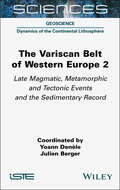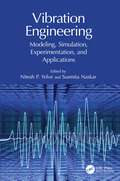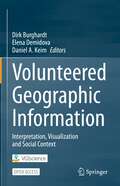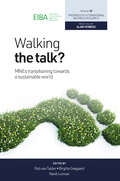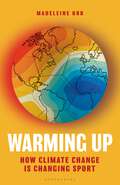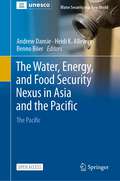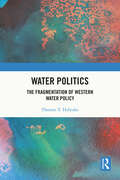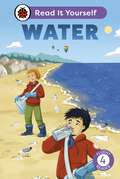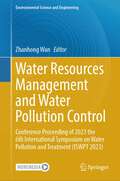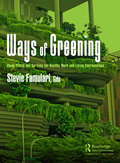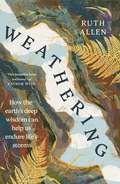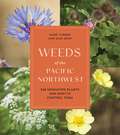- Table View
- List View
The US Housing Crisis: Home and Trust in the Real Estate Economy (The Urban Book Series)
by Judith KellerThis book aims to draw careful distinctions between the various forms of housing insecurity and personal circumstances research participants experience. While the urgency of the housing crisis in the US has produced a lot of scholarly work on housing, it often fails to recount the real life struggles that the housing crisis is causing. This is where the book provides a distinct contribution to housing studies and urban geography. The author use of trust as an analytical lens, her qualitative approach, and her work with people on the ground aim to move away from a quantitative understanding of the crisis by giving it a human face. The author seeks to bring to light the human costs of the destruction of home as well as the political reactions and day-to-day strategies that residents apply to make ends meet in times of the US housing crisis.
The Variscan Belt of Western Europe, Volume 2: Late Magmatic, Metamorphic and Tectonic Events and the Sedimentary Record
by Yoann Denele Julien BergerThis book deals with the geological record and the evolution of ideas concerning the Variscan orogenic belt in France and neighboring regions. Volume 1 is based on a general introduction concerning the imprint of the Variscan period on the geology of France, as well as on the particularities of the study of this ancient orogen. A history of the concepts applied to the Variscan belt is proposed in order to consider this orogen in the history of Earth Sciences. A paleogeodynamic analysis of the Variscan cycle sets the general framework for the evolution of the orogen, which is then tackled through the prism of the magmatic, metamorphic and tectonic record of the early phases (from Cambrian to Lower Carboniferous). Volume 2 proposes an analysis of the late evolution of the Variscan orogenic belt, reflecting its dismantling in a high-temperature context during the Upper Carboniferous and Permian. The sedimentary archives are described, as well as the questions raised by the specificities of this ancient orogen.
The Variscan Belt of Western Europe, Volume 2: Late Magmatic, Metamorphic and Tectonic Events and the Sedimentary Record
by Yoann Denèle Julien BergerThis book deals with the geological record and the evolution of ideas concerning the Variscan orogenic belt in France and neighboring regions. Volume 1 is based on a general introduction concerning the imprint of the Variscan period on the geology of France, as well as on the particularities of the study of this ancient orogen. A history of the concepts applied to the Variscan belt is proposed in order to consider this orogen in the history of Earth Sciences. A paleogeodynamic analysis of the Variscan cycle sets the general framework for the evolution of the orogen, which is then tackled through the prism of the magmatic, metamorphic and tectonic record of the early phases (from Cambrian to Lower Carboniferous). Volume 2 proposes an analysis of the late evolution of the Variscan orogenic belt, reflecting its dismantling in a high-temperature context during the Upper Carboniferous and Permian. The sedimentary archives are described, as well as the questions raised by the specificities of this ancient orogen.
Vegetable Seeds: Production and Technology
by Gregory E WelbaumMost food and fiber crops are produced from seed. This means that the world's population is dependent on annual seed production for its food supply. Vegetable seed production is much different and more challenging than production of grain crops. This book explains the biology and technology behind producing, maintaining, and enhancing the quality of vegetable seeds from breeding through to the marketed product. It begins with six chapters on a broad range of seed-related topics: the importance of seeds, reproductive biology of plants, genetic improvement strategies, quality assurance of seed production, post-harvest seed enhancement, and organic production. The remaining chapters cover seed production in eleven important vegetable families. Each chapter provides a description of the botany, types and cultivars, genetic improvement, pollination, soil fertility management, pest management, crop production, harvesting, post-harvest handling, and seed yields. The aim of this book is to educate how to produce high-quality vegetable seeds. Incorporating both current methodologies and recent research results, it is suitable for students, researchers, and professionals in the seed industry.
Venture Meets Mission: Aligning People, Purpose, and Profit to Innovate and Transform Society
by Arun Gupta Gerard George Thomas FewerThe world is facing dramatic geopolitical, environmental, and technological shifts. Venture Meets Mission argues that if Business, Government, and Society come together, rebuild trust, and collaborate, we have a generational opportunity to address societal challenges—climate change, cybersecurity, disease outbreaks, food insecurity, and education. The book explains, with hope and passion, how our existing entrepreneurial ecosystem, with the ideals of democracy, can be the foundation for a new mission-driven capitalism. The good news is the components of this problem-solving ecosystem already exist. The authors explain what is required to join people, purpose, and profit together for world-changing impact—starting with rebuilding trust among Business, Government, and Society. The authors draw on their leadership experience with Silicon Valley innovation, venture capital, and work at the highest levels of the federal government. The book tells engaging stories of successful entrepreneurs, with diverse perspectives and intersectional experiences, who combine mission and venture to solve critical societal problems. This book seeks to inspire a generation of students, young professionals, and entrepreneurial executives to pursue mission-driven ventures that can make the world a better place. Venture Meets Mission also explains why and how forward-thinking government officials and policymakers can harness private sector entrepreneurship and innovation to solve society's problems.
Vibration Engineering: Modeling, Simulation, Experimentation, and Applications
by Nitesh P. Yelve Susmita NaskarVibration Engineering presents recent developments in the field of engineering, encompassing industrial norms, applications within the finite element method, infrastructure safety assessment, and active vibration control strategies. It offers a study in seismic vibration control and analysis for building structures and liquid storage tanks.Spanning across the multiple domains of vibration engineering, the book highlights machinery diagnostics, modal analysis, energy harvesting, balancing, vibration isolation, and human-vibration interaction. It discusses experimental fault identification in journal bearings using vibration-based methods. This book also considers advances in vibration-based structural health monitoring of civil infrastructures.This book will be a useful reference for industry professionals and engineers facing challenges while dealing with the vibrations in the fields of mechanical, aerospace, structural, and civil engineering.
Vibration Engineering: Modeling, Simulation, Experimentation, and Applications
Vibration Engineering presents recent developments in the field of engineering, encompassing industrial norms, applications within the finite element method, infrastructure safety assessment, and active vibration control strategies. It offers a study in seismic vibration control and analysis for building structures and liquid storage tanks.Spanning across the multiple domains of vibration engineering, the book highlights machinery diagnostics, modal analysis, energy harvesting, balancing, vibration isolation, and human-vibration interaction. It discusses experimental fault identification in journal bearings using vibration-based methods. This book also considers advances in vibration-based structural health monitoring of civil infrastructures.This book will be a useful reference for industry professionals and engineers facing challenges while dealing with the vibrations in the fields of mechanical, aerospace, structural, and civil engineering.
Volunteered Geographic Information: Interpretation, Visualization and Social Context
by Dirk Burghardt Elena Demidova Daniel A. KeimThis open access book includes methods for retrieval, semantic representation, and analysis of Volunteered Geographic Information (VGI), geovisualization and user interactions related to VGI, and discusses selected topics in active participation, social context, and privacy awareness. It presents the results of the DFG-funded priority program "VGI: Interpretation, Visualization, and Social Computing" (2016-2023).The book includes three parts representing the principal research pillars within the program. Part I "Representation and Analysis of VGI" discusses recent approaches to enhance the representation and analysis of VGI. It includes semantic representation of VGI data in knowledge graphs; machine-learning approaches to VGI mining, completion, and enrichment as well as to the improvement of data quality and fitness for purpose. Part II "Geovisualization and User Interactions related to VGI" book explores geovisualizations and user interactions supporting the analysis and presentation of VGI data. When designing these visualizations and user interactions, the specific properties of VGI data, the knowledge and abilities of different target users, and technical viability of solutions need to be considered. Part III "Active Participation, Social Context and Privacy Awareness" of the book addresses the human impact associated with VGI. It includes chapters on the use of wearable sensors worn by volunteers to record their exposure to environmental stressors on their daily journeys, on the collective behavior of people using location-based social media and movement data from football matches, and on the motivation of volunteers who provide important support in information gathering, filtering and analysis of social media in disaster situations.The book is of interest to researchers and advanced professionals in geoinformation, cartography, visual analytics, data science and machine learning.
Walking the Talk?: MNEs Transitioning Towards a Sustainable World (Progress in International Business Research #18)
by Rob van Tulder, Birgitte Grøgaard, and Randi LunnanAcross the globe, concerns escalate about the effects of greenhouse gas emissions on global climate conditions, implications on global trade from pandemics, and the destruction of ecosystems from the exploitation of limited and non-replaceable global resources. Politicians and businesses alike agree that something must be done, the question is what, how, when, and by whom? What should firms do to reduce their carbon footprint while continuing to secure jobs and profits? When should firms make decisions to transform their businesses given the uncertainty of markets as well as the lack of clear guidance from global institutions? In this volume we ask: Are we actually walking the talk? This volume includes select contributions from the 2022 EIBA conference in Oslo, as well as a number of invited contributions. The book is a tribute to Professor Alain Verbeke who has contributed substantially to the theme of ‘walking the talk’ in the IB community. The chapters in this volume illustrate a broad spectre of research questions and ways to answer them within the IB community that provide evidence that many types of actors are taking – or can take - steps to actually “walk the talk”. The contributions also show, however, that MNEs face considerable challenges to make their ambitions real, which in turn presents a challenge for IB scholarship to develop relevant and robust analytical approaches to cover the transition problems that MNEs face.
Walking the Talk?: MNEs Transitioning Towards a Sustainable World (Progress in International Business Research #18)
by Rob Van Tulder Birgitte Grøgaard Randi LunnanAcross the globe, concerns escalate about the effects of greenhouse gas emissions on global climate conditions, implications on global trade from pandemics, and the destruction of ecosystems from the exploitation of limited and non-replaceable global resources. Politicians and businesses alike agree that something must be done, the question is what, how, when, and by whom? What should firms do to reduce their carbon footprint while continuing to secure jobs and profits? When should firms make decisions to transform their businesses given the uncertainty of markets as well as the lack of clear guidance from global institutions? In this volume we ask: Are we actually walking the talk? This volume includes select contributions from the 2022 EIBA conference in Oslo, as well as a number of invited contributions. The book is a tribute to Professor Alain Verbeke who has contributed substantially to the theme of ‘walking the talk’ in the IB community. The chapters in this volume illustrate a broad spectre of research questions and ways to answer them within the IB community that provide evidence that many types of actors are taking – or can take - steps to actually “walk the talk”. The contributions also show, however, that MNEs face considerable challenges to make their ambitions real, which in turn presents a challenge for IB scholarship to develop relevant and robust analytical approaches to cover the transition problems that MNEs face.
Warming Up: How Climate Change is Changing Sport
by Madeleine OrrThe world of sport has a new opponent: climate change.In recent years, a world championship marathon was held at midnight to avoid the blistering sun. Professional athletes needed oxygen tanks to play during wildfire season in California. Players collapsed and play was suspended amid the heat and bushfire smoke at the Australian Tennis open. Ski resorts in the Alps have turned into ghost towns. Golf courses are sinking into the sea. And then there's the Qatar World Cup, among the greatest follies in sporting history, one that saw hundreds (perhaps thousands) of heat-induced deaths before a ball was even kicked. The threat climate change poses to sport is clear, but with billions of participants and fans around the world who rely on the sector for entertainment, jobs, fitness and health, this is one industry we can't afford to lose. In this book, Madeleine Orr shows it doesn't have to be this way. There are ways to mitigate, and perhaps counter, even the worst elements of climate change. A world-leading sport ecologist, Madeleine interviews athletes, coaches, politicians and thought-leaders to learn more about the inevitable consequences for this trillion-dollar industry. From the frontlines of climate change, Warming Up takes readers through a play-by-play of how global warming is already impacting sport, and how the sports world can fight back.
The Water, Energy, and Food Security Nexus in Asia and the Pacific: The Pacific (Water Security in a New World)
by Andrew Dansie Heidi K. Alleway Benno BöerThis open access book considers the water, energy, food (WEF) nexus in the Pacific region. The region comprises seventeen sovereign countries and seven territories spread across the Pacific Ocean, a blue expanse that covers a fifth of the world’s surface area but contains only 0.5% of the population—or 44.5 million people. The uniqueness of the Pacific and the need for a Pasifika-led approach to sustainability across environmental, societal and economical spheres requires this blue continent to be considered in a separate volume under the ‘Water Security in a New World’ series.This Pacific volume is focussed on water, energy and food security in Pacific Island Countries and Territories (PICTs) and the challenges produced by the impacts of anthropogenic climate change and human population pressures. The diversity of culture, traditional knowledge and ways of life across the Pacific are united by similar geographies and opportunities to apply a ‘Pacific specific’ WEF nexus approach; a coordinated approach to manage water, energy and food that is centred on active decision making across the three sectors to increase the security of each. Importantly, a WEF nexus approach builds on national and international efforts to date in the Pacific which include Integrated Water Resource Management, Ridge to Reef, Source to Sea, UNESCO Biosphere Reserves, Integrated Coastal Zone Management and other similar approaches.In this book, contributions by authors from governments, regional bodies, multilateral agencies, and academia describe water security and its intersectionality with both the energy and food sectors, highlighting the significance of both land and marine food systems and connectivity between water and energy in a Pacific-focussed context. It is demonstrated that these systems cannot be separated from the challenges associated with healthy environments and functioning ecological services, transport, and waste that are unique to this vast archipelagic region. To achieve meaningful change, it is essential that solutions are cognizant of the world’s colonial past and the global inequalities that persist today. The path forward for water and food systems is one that is Pasifika-led and builds on traditional knowledge and local capacity. National energy demands must consider the future with solutions comprising both WEF-integrated approaches and new energy technologies to hasten the transition away from fossil fuels. Globally, major greenhouse gas emitters both past and present need to step up for the environmental and economic benefit of all by rapidly reducing greenhouse gas emissions and supporting Pasifika leadership on highly ambitious net zero goals.This book is a highly recommended source of information and inspiration for policy makers, decision makers, research communities and practitioners dealing with any aspect of water, energy, or food security in the Pacific.
Water Politics: The Fragmentation of Western Water Policy
by Thomas T. HolyokeThis book is about the enactment, adaption, and ultimately fragmentation of government policy regarding the use of water in the American west. It describes its origins, how it became about building big projects, and how it was fragmented by pressures from environmental activism. The book also explores the western water crisis in the United States. The case studies used in here will help readers understand water development and the political battles around it in most of the western states to show here how and why the policy changed and even broke down. The book is divided into two parts and describes the different eras of water policy. While most books on water policy focus on its deficiencies for meeting future challenges, Water Politics: The Fragmentation of Western Water Policy attempts to explore why those deficiencies occurred in the first place. The book is intended for undergraduate and graduate students in political science and policy studies who are interested in how public policies are enacted, how they change, and how they fall apart over time and why. The book will also be of particular interest to students in other disciplines that deal with water such as environmental studies, geology, sociology, hydrology, and civil engineering.
Water Politics: The Fragmentation of Western Water Policy
by Thomas T. HolyokeThis book is about the enactment, adaption, and ultimately fragmentation of government policy regarding the use of water in the American west. It describes its origins, how it became about building big projects, and how it was fragmented by pressures from environmental activism. The book also explores the western water crisis in the United States. The case studies used in here will help readers understand water development and the political battles around it in most of the western states to show here how and why the policy changed and even broke down. The book is divided into two parts and describes the different eras of water policy. While most books on water policy focus on its deficiencies for meeting future challenges, Water Politics: The Fragmentation of Western Water Policy attempts to explore why those deficiencies occurred in the first place. The book is intended for undergraduate and graduate students in political science and policy studies who are interested in how public policies are enacted, how they change, and how they fall apart over time and why. The book will also be of particular interest to students in other disciplines that deal with water such as environmental studies, geology, sociology, hydrology, and civil engineering.
Water: Read It Yourself - Level 4 Fluent Reader (Read It Yourself)
by LadybirdHumans, animals, and plants need water every day to survive. But where does it come from? How do we know if it is safe to drink? Learn all about how water is saved, cleaned, and shared in this fact-filled book. Water is from Fluent Reader Level 4 and is ideal for more fluent readers aged from 7+ who are starting to read independently.Each book has been carefully checked by educational and subject consultants and includes comprehension puzzles, book band information, and tips for helping children with their reading. With five levels to take children from first phonics to fluent reading and a wide range of different stories and topics for every interest, Read It Yourself helps children build their confidence and begin reading for pleasure.
Water Resources in the Lancang-Mekong River Basin: Impact of Climate Change and Human Interventions
by Qiuhong Tang Deliang Chen Junguo LiuThis open access book provides a comprehensive, up-to-date picture of the current state of knowledge covering climate change, surface water change, arsenic pollution, water utilization, water-food-energy nexus, water related hazards, water management, and water governance in the Lancang-Mekong River Basin. Considering the widely concerned fact that the climate change and human intervention induced impacts on water will bring unprecedented threats to human societies and ecosystems, the book intends to support UN’s sustainable development goals through sustainable use of water by providing the most accurate and updated information on climate and water changes in a consistent way. Underlying all aspects of the book is a strong commitment to assessing the science comprehensively, without bias and in a way that is relevant to policy but not policy prescriptive. It can provide implications to support decision-makers and stakeholders for integrated water resources management and sustainable development at all levels.
Water Resources Management and Water Pollution Control: Conference Proceeding of 2023 the 6th International Symposium on Water Pollution and Treatment (ISWPT 2023) (Environmental Science and Engineering)
by Zhanhong WanThis book features select peer-reviewed proceedings from the 6th International Symposium on Water Pollution and Treatment (ISWPT 2023). It comprises articles written by researchers, practitioners, policymakers and entrepreneurs that examine recent advancements in water pollution and treatment. The book covers a range of topics, including the impact of climate change on water pollution and technologies for reducing greenhouse emissions in water and wastewater treatment. Additionally, it explores water resources planning and management, water quality protection and technologies and processes that control water pollution. This book is useful for beginners, researchers and professionals working in the area of water pollution management, policy and governance.
Ways of Greening: Using Plants and Gardens for Healthy Work and Living Surroundings
by Stevie FamulariThis book focuses on rethinking working and living spaces and understanding how "greening" can make them healthier and their occupants happier. It teaches how to see unique ideas for spaces and some of the materials needed to create the designs. Inspired by a study that states that 8% of a space needs to have plants in order to positively affect the air quality of the space, this book explores what that minimum would look like in spaces and how it can be done to existing spaces as well as to new site designs, greening both interiors and exteriors. Using the mathematical amount of 10% per square foot, the illustrations start at that quantity of greening and show how it can look. The sites selected are both public and private sites, as well as interior and exterior. As there are more modalities, needs, and locations where people now work, making sure that multiple types of spaces are designed for people’s success is more relevant than ever. This includes designs for more traditional offices, open-air offices, commercial spaces, homes, studios, and more. Ways of Greening: using Plans and Gardens for Healthy Work and Living Surroundings gives readers a way to not only understand greening but to understand how to see greening applied to their place. The two basic ways to see the spaces selected are existing spaces to which greening design is applied afterward and upcoming spaces in which greening design can be built directly into the space. The first type of retrofitting greening into existing spaces can also be combined with the second type of space (new designs). There are examples of both types throughout the book. Essentially, this book addresses ways in which business owners, residents, developers, architects, agencies, and others can integrate greening to improve the air quality and the quality of life with a green solution.
Ways of Greening: Using Plants and Gardens for Healthy Work and Living Surroundings
by Stevie FamulariThis book focuses on rethinking working and living spaces and understanding how "greening" can make them healthier and their occupants happier. It teaches how to see unique ideas for spaces and some of the materials needed to create the designs. Inspired by a study that states that 8% of a space needs to have plants in order to positively affect the air quality of the space, this book explores what that minimum would look like in spaces and how it can be done to existing spaces as well as to new site designs, greening both interiors and exteriors. Using the mathematical amount of 10% per square foot, the illustrations start at that quantity of greening and show how it can look. The sites selected are both public and private sites, as well as interior and exterior. As there are more modalities, needs, and locations where people now work, making sure that multiple types of spaces are designed for people’s success is more relevant than ever. This includes designs for more traditional offices, open-air offices, commercial spaces, homes, studios, and more. Ways of Greening: using Plans and Gardens for Healthy Work and Living Surroundings gives readers a way to not only understand greening but to understand how to see greening applied to their place. The two basic ways to see the spaces selected are existing spaces to which greening design is applied afterward and upcoming spaces in which greening design can be built directly into the space. The first type of retrofitting greening into existing spaces can also be combined with the second type of space (new designs). There are examples of both types throughout the book. Essentially, this book addresses ways in which business owners, residents, developers, architects, agencies, and others can integrate greening to improve the air quality and the quality of life with a green solution.
We Will Not Be Saved: A memoir of hope and resistance in the Amazon rainforest
by Nemonte Nenquimo'Nemonte's writing is as provocative as it is inspiring' EMMA THOMPSON'One of the most effective leaders for indigenous rights and environmental justice' LAURENE POWELL JOBS'I'm here to tell you my story, which is also the story of my people and the story of this forest.'Born into the Waorani tribe of Ecuador's Amazon rainforest, Nemonte Nenquimo was taught about plant medicines, foraging, oral storytelling, and shamanism by her elders. Age 14, she left the forest for the first time to study with an evangelical missionary group in the city. Eventually, her ancestors began appearing in her dreams, pleading with her to return and embrace her own culture.She listened. Two decades later, Nemonte has emerged as one of the most forceful voices in climate-change activism. She has spearheaded the alliance of indigenous nations across the Upper Amazon and led her people to a landmark victory against Big Oil, protecting over a half million acres of primary rainforest. Her message is as sharp as the spears that her ancestors wielded - honed by her experiences battling loggers, miners, oil companies and missionaries.In this astonishing memoir, she partners with her husband Mitch Anderson, founder of Amazon Frontlines, digging into generations of oral history, uprooting centuries of conquest, hacking away at racist notions of Indigenous peoples, and ultimately revealing a life story as rich, harsh and vital as the Amazon rainforest herself.More praise for We Will Not Be Saved: 'A radical manifesto for our times' VANESSA KIRBY'An act of storytelling generosity' NATHALIE KELLY'Inspiring, moving and unforgettable' ROWAN HOOPER'Truly Inspiring and humbling' CAROLINE SANDERSON** Publishing in the US as WE WILL BE JAGUARS**
The Weather Observer's Handbook
by null Stephen BurtThis handbook provides a comprehensive, practical, and independent guide to all aspects of making weather observations. The second edition has been fully updated throughout with new material, new instruments and technologies, and the latest reference and research materials. Traditional and modern weather instruments are covered, including how best to choose and to site a weather station, how to get the best out of your equipment, how to store and analyse your records and how to share your observations. The book's emphasis is on modern electronic instruments and automatic weather stations. It provides advice on replacing 'traditional' mercury-based thermometers and barometers with modern digital sensors, following implementation of the UN Minamata Convention outlawing mercury in the environment. The Weather Observer's Handbook will again prove to be an invaluable resource for both amateur observers choosing their first weather instruments and professional observers looking for a comprehensive and up-to-date guide.
Weathering
by Ruth AllenRocks and mountains have withstood aeons of life on our planet - gradually eroding, shifting, solidifying, and weathering. We might spend a little less time on earth, but humans are also weathering: evolving and changing as we're transformed by the shifting climates of our lives and experiences. So, what might these ancient natural forms have to teach us about resilience and change?In a stunning exploration of our own connection to these enduring forms, outdoor psychotherapist and geologist Ruth Allen takes us on a journey through deep time and ancient landscapes, showing how geology - which has formed the bedrock of her own adult life and approach to therapy - can offer us a new way of thinking about our own grief, change and boundaries.In a world shaken by physical, political, and medical disasters, Weathering argues for a deeper understanding of the ground beneath our feet to better serve ourselves and the world we live in.
Weathering and Erosion Processes in the Natural Environment
by Virendra Bahadur Singh Sughosh Madhav Naresh Chandra Pant Ravi ShekharWeathering and Erosion Processes in the Natural Environment An indispensable introduction to the key environmental processes of weathering and erosion Natural and human-induced weathering processes can have a great impact on soil and groundwater quality. With climate change and other environmental challenges placing increased emphasis on these resources, it has never been more important for researchers and environmental professionals to attain detailed knowledge of weathering and erosion processes. Weathering and Erosion Processes in the Natural Environment meets this need with a rigorous, systematic overview. Beginning with a description of different forces and processes that contribute to weathering, it then discusses the different kinds of landforms that can be produced by weathering and erosion processes, as well as the potential impacts of hydrogeological processes on both surface water and groundwater. The result is a volume that balances qualitative and quantitative understanding of this crucial subject. Weathering and Erosion Processes in the Natural Environment readers will also find: Documented examples in which weathering and erosion processes have led to heavy metals and other trace elements in groundwater Detailed discussion of climate change impacts, including extreme weather events and rising carbon dioxide levels Modeling approaches throughout to enable quantitative assessment and predictions of future impact Weathering and Erosion Processes in the Natural Environment is ideal for researchers and advanced students in geology, geochemistry, hydrogeochemistry and environmental science, as well as professionals dealing with water and soil management.
Weathering and Erosion Processes in the Natural Environment
by Virendra Bahadur Singh Sughosh Madhav Naresh Chandra Pant Ravi ShekharWeathering and Erosion Processes in the Natural Environment An indispensable introduction to the key environmental processes of weathering and erosion Natural and human-induced weathering processes can have a great impact on soil and groundwater quality. With climate change and other environmental challenges placing increased emphasis on these resources, it has never been more important for researchers and environmental professionals to attain detailed knowledge of weathering and erosion processes. Weathering and Erosion Processes in the Natural Environment meets this need with a rigorous, systematic overview. Beginning with a description of different forces and processes that contribute to weathering, it then discusses the different kinds of landforms that can be produced by weathering and erosion processes, as well as the potential impacts of hydrogeological processes on both surface water and groundwater. The result is a volume that balances qualitative and quantitative understanding of this crucial subject. Weathering and Erosion Processes in the Natural Environment readers will also find: Documented examples in which weathering and erosion processes have led to heavy metals and other trace elements in groundwater Detailed discussion of climate change impacts, including extreme weather events and rising carbon dioxide levels Modeling approaches throughout to enable quantitative assessment and predictions of future impact Weathering and Erosion Processes in the Natural Environment is ideal for researchers and advanced students in geology, geochemistry, hydrogeochemistry and environmental science, as well as professionals dealing with water and soil management.
Weeds of the Pacific Northwest: 368 Unwanted Plants and How to Control Them
by Sami Gray Mark TurnerA comprehensive guide to the most common weeds of the Pacific Northwest, with essential information on their management and eradication Weeds are everywhere. They crowd out valuable agricultural crops, compete with the tomatoes and beans in your vegetable garden, spread rampantly along roadsides, and pop up from the tiniest cracks in sidewalks. In order to manage them, we must first learn how to identify them. Weeds of the Pacific Northwest is a guide to identifying, controlling, and eradicating over 300 species of weeds that gardeners and homeowners are likely to encounter in Northern California, Oregon, Washington, and British Columbia. Though they can all cause trouble, each weed is different. The hundreds of user-friendly photographs and detailed descriptions of each species here ensure that you can spot and treat any weed in your path. As the experts behind this book demonstrate, some plants can be killed by eating them, some by digging, some by smothering, and some only by the judicious application of chemical herbicides—and it is very important for you and your neighbors to know and understand the differences.

